Not registered?
If you have not yet registered on the Valsir web site fill in the form with your details and obtain free access to the download area where you will be free to download our price lists and technical brochures. You will also have the possibility of receiving our periodic newsletter: the best way to remain up-to-date on all the latest developments in Valsir.

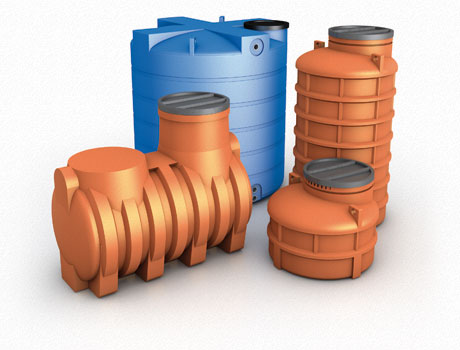
Valsir products provide a solution for all the various phases of integrated water cycle management with the priority objective of guaranteeing the preservation of a precious resource for man and the environment.
The treatment schemes proposed allow the established limits to be reached for discharge into sewers, dispersion in underground pipelines, discharge into a surface water body or into land, and possible reuse depending on the specific context.
Lightweight: easy handling during installation.
Versatility: use and installation simplified by the monoblock structure.
Flexibility: individually tailored situation-specific solutions, thanks to the wide range of accessories.
Long service life: the material does not deteriorate in the presence of chemical substances.
Competitiveness: lightweight and the monoblock structure make it a highly competitive system especially for plants
of up to 90 equivalent inhabitants.
There are various materials for the production of water collection points and polyethylene (PE) is the most appropriate for this application.
The design criteria used refer to the standards in force and the technical regulations adopted by the national authorities.
The sizing parameters derive from the numerous years of experience of the Valsir design office and refer to safety-orientated design hypotheses, confirmed by the experience gained.
European Community
In 1991, European directives stipulated that Member States elaborate programmes and laws for the application of the directive concerning the collection and treatment of wastewater.
Valsir respects the european legislations the above directives.
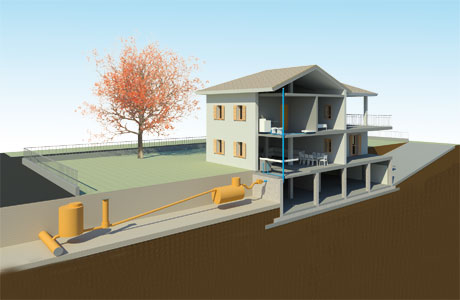
The characteristics of waste water from residential buildings and similar are comparable to those of households.
Suitable parameterization coefficients translate the pollutant load from this type of user into “equivalent inhabitants”.
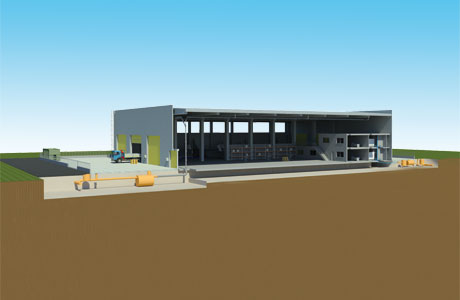
The modular treatment tanks manufactured by Valsir can be used by non-residential users such as workshops, service stations, car washes, for the treatment of stormwater from car parks, yards,
and sealed surfaces.e.

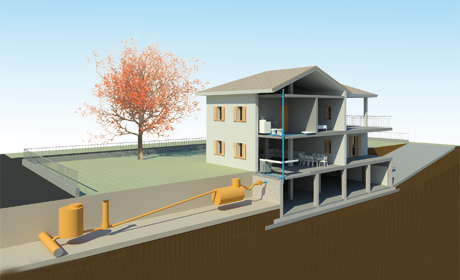
The characteristics of waste water from residential buildings and similar are comparable to those of households. Suitable parameterization coefficients translate the pollutant load from this type of user into “equivalent inhabitants”.
The content of the pollutants present is substantially expressed in terms of BOD* and nitrogen at discharge with the possible presence of suspended solids and floating materials such fat or oil.
For the treatment of the wastewater from this type of urban settlement there are different system schemes depending on the type of discharge: discharge into sewers, discharge into receiving water body, dispersion onto land, possible re-use of the treated water, for example for irrigation.
Primary treatment schemes can be used for the removal of sedimentable suspended solids, fats, oil and floating materials in the case of connection to the sewerage network, in compliance with local regulations and the requirements of the multiutilities.
In the case of direct discharge into a receiving body of water there will have to be secondary treatments aimed at the reduction of BOD below the limits of the law: aerobic or anaerobic percolating filter systems or activated sludge plants.
*BOD: Expresses the amount of oxygen needed by aerobic microorganisms, to break down organic material present in a given water sample so it is an indirect measurement of the bacterially degradable organic substances present in the water.
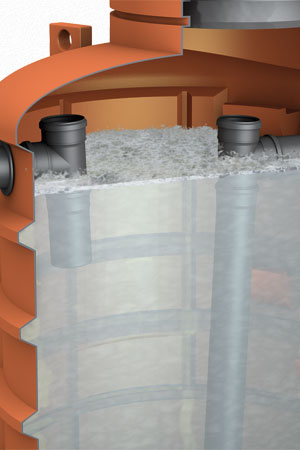
Primary treatment incorporates all the treatments aimed at the removal of macroscopic pollutants present in wastewater.
Coarse and heavy solids, such as sand, soil, gravel, which are sedimentable, are separated by gravity sedimentation and are collected on the bottom of the treatment tank.
Light solids, such as grease and oil of a food or mineral nature, rise to the surface of the liquid in the tanks and are skimmed off.
The primary treatments are mainly composed of physical systems, even though in the tanks biological degrading mechanisms can be developed to break down the substances that settle on the bottom and are removed, in the form of sludge.
Primary treatments encompass all the phases of the processes that are responsible for the gravimetric removal of suspended sedimentable and floating solids.
The products used consist of tanks, the size and shape of which are designed to facilitate the sedimentation and/or floating processes; the tanks are generally free of moving parts and electromechanical equipment in that the static processes that take place within them involve the gravimetric separation of the solids present in the wastewater with differing specific weights.
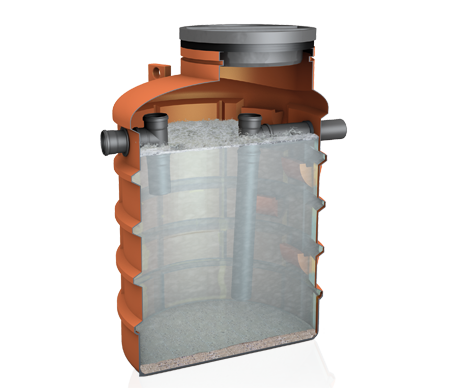
The grease separator is required in the preliminary stage of the treatment of effluents containing organic fats and oil from residential users, or from commercial enterprises with similar wastewater: community kitchens, restaurants, hotels, motorway catering areas, fast food restaurants, steakhouses, and similar.
The Imhoff tanks are used to clarify raw sewage coming directly from residential waste systems and similar, such as schools, playschools, restaurants, hotels and communities.
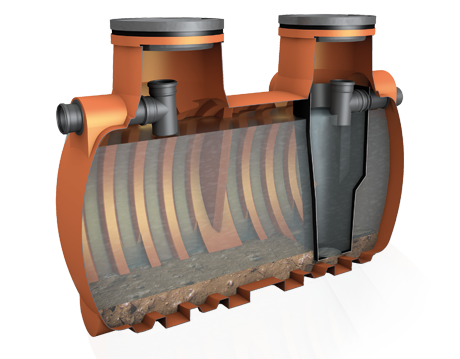
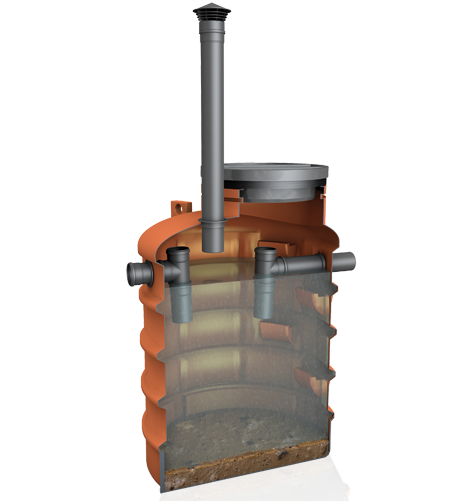
Used for the treatment of black water that is substantially free of fats and floating substances, the septic tank consists of a sedimentation tank where static sedimentation of the suspended solids contained in the sewage takes place.
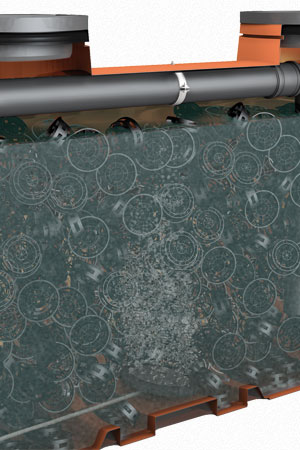
The various secondary treatments put forward aim at the reduction of organic pollution (expressed in terms of BOD) in effluent wastewater and the simultaneous reduction by bacterial assimilation of the other micropollutants (phosphorus and nitrogen).
The removal of BOD is made possible through biological synthesis by means of bacterial populations whose growth is promoted by the particular conditions and microclimate that are established inside the purification tank, which becomes, in all respects, a biological reactor.
The various treatments proposed differ according to the way in which the biological reactions take place and, ultimately, in relation to the different types of bacterial population selected, depending on whether the bacterial population have been grown in the indistinct mass of the reactor (suspended biomass) or whether development is favoured on a solid support (adherent biomass) consisting of a series
of plastic type filling media.
The adoption of a secondary treatment plant is generally preceded by one or more primary treatment units (grease separator, Imhoff, septic tank) aimed at the removal of the solid and coarse floating materials that could otherwise interfere with the correct performance of the biological reactions and with the transfer of oxygen (for aerobic type plants), as well as clogging the pipes and hydraulic connections.
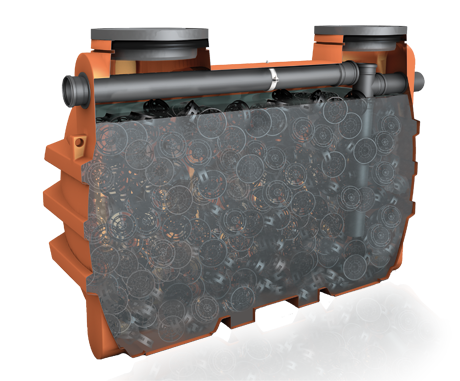
The anaerobic percolating filter is an extremely simple but effective biological purification system
(it is completely free of electromechanical elements), which reaches such a high degree of purification that the treated wastewater, predominantly of a domestic or similar origin, can be discharged directly into a surface body of water.
The aerobic percolating filter with natural convection of air is an extremely simple biological purification system, free of electromechanical elements,
which reaches such a high degree of purification, that the treated wastewater, predominantly of a domestic or similar origin, can be discharged directly into a surface body of water.
The aerobic percolating filter is generally installed downstream of an Imfoff tank.
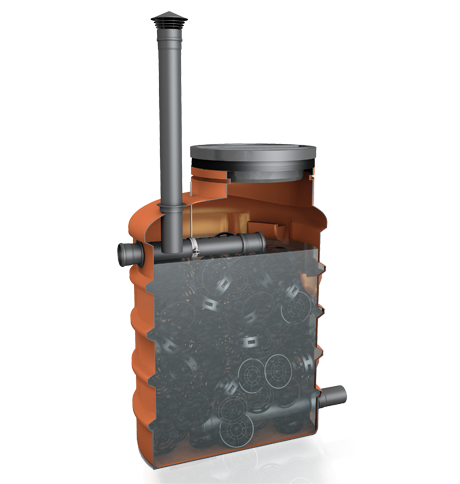
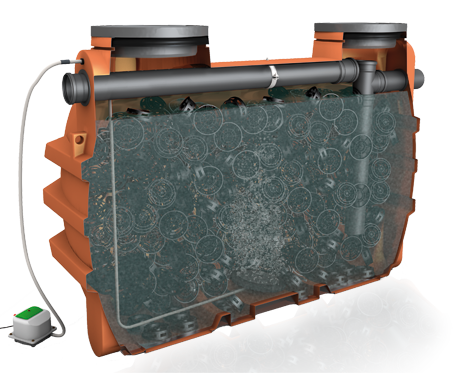
The aerobic percolating filter with air insufflation is a biological purifying system that reaches such a high degree of purification that the treated wastewater, predominantly of a domestic or similar origin, can be discharged directly into a surface body of water.
The aerobic conditions of the filter media are guaranteed by the insufflation of external air using
a volumetric blower.
The aerobic percolating filter with air insufflation is generally installed downstream of an Imfoff tank.
The combined purification performance of the system (Imhoff - aerobic percolating filter with forced air) is such as to allow the wastewater to be discharged into a surface body of water.

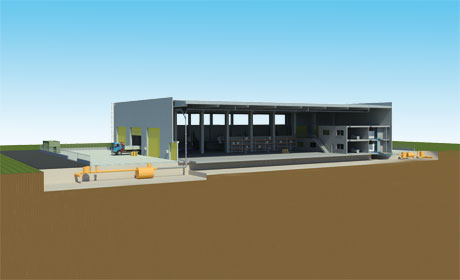
The modular treatment tanks manufactured by Valsir can be used by non-residential users such as workshops, service stations, car washes, for the treatment of stormwater from car parks, yards,
and sealed surfaces.
The wastewater coming from these buildings and areas is characterised by the presence of oil and hydrocarbons, as well as heavy solids such as sand and gravel. According to the type of user being served, residues of detergents and suspended solids can also be found.
The requirements of the managing bodies of the sewer networks and the local regulations require the adoption of a preliminary treatment for the removal of oil and floating substances present in the stormwater from car parks and waterproof yards.
For the treatment of wastewater from this type of source, plant schemes are necessary that substantially involve oil extraction treatments for the removal of hydrocarbon films and floating substances and sand removal treatments for the removal of sands and settleable suspended solids.
The treatments phases will depend on the intended type of discharge: discharge into a sewer, drainage into a receiving body of water, dispersion onto land, any re-use of the treated water (for example, for purposes such as irrigation, etc.).
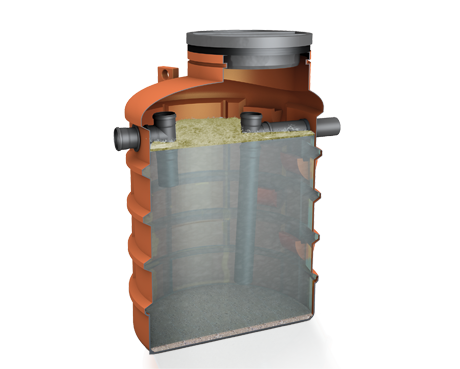
It consists of a simple polyethylene tank for accumulation of calm wastewater with a suitably shaped septum on the inside to facilitate the settling of the heavier solids.
The static oil separator is a de-oiling gravity system that allows the treatment and elimination of non-emulsified oil and hydrocarbons having a specific weight lower than 0.85 gr/cm3 from the waste water effluent, by means of a static separation with an efficiency of > 90%.
The sand trap is essential in the treatment of storm and rainwater containing coarse solid particles that settle easily by gravity, such as soil, gravel, solid particulate.
A sand trap must always be installed upstream of an oil separating system with a coalescence filter.
This system is used for the collection of stormwater from uncovered car parks and/or yards.
The coarse particles contained in the stormwater must be gathered in the sand trap to avoid interference with the correct functioning of the coalescence filter.
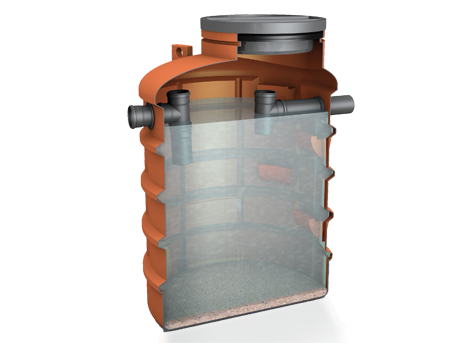
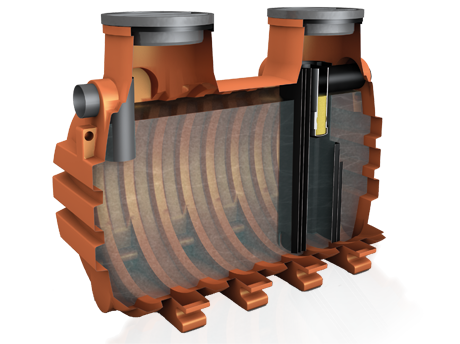
The oil separator with coalescence filter is a highly efficient, gravity oil separation system that allows the treatment and elimination of non-emulsified hydrocarbons having a specific weight lower than 0.85 gr/cm3 from the wastewater, through a static separation with an efficiency greater than 95%.
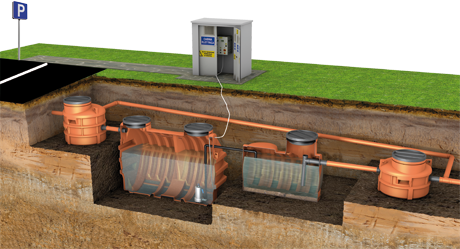
This plant scheme encompasses the combination of a common oil separator/sand trap with or without a coalescence filter with an adequately dimensioned accumulation tank, which is positioned immediately upstream of the oil separator.
The tanks include a series of products in polyethylene, of various shapes and sizes, used for the collection and storage of rainwater and liquid foodstuffs.
The entire range includes tanks for installation above ground and underground. The rainwater that is collected can be used for irrigation purposes, for feeding non potable dual networks (e.g. flush cisterns), or as a fire-fighting reserve.
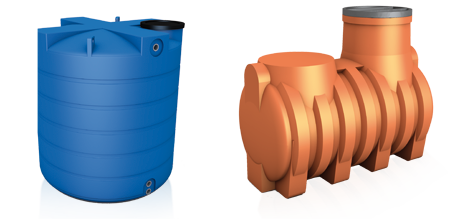
Valsir provides complete support both during the planning phase and on site, thanks to a first-class technical office made up of a team of highly experienced engineers, capable of dealing with the most complex system requirements.